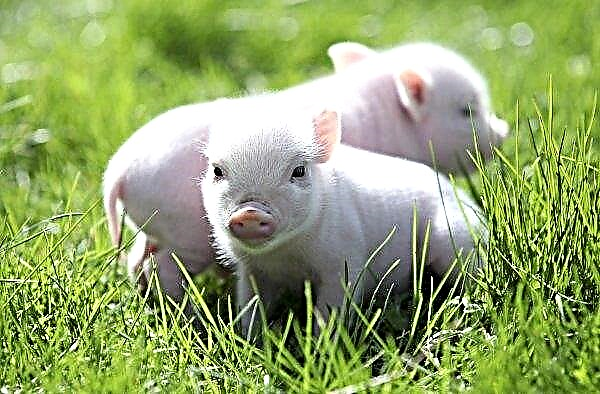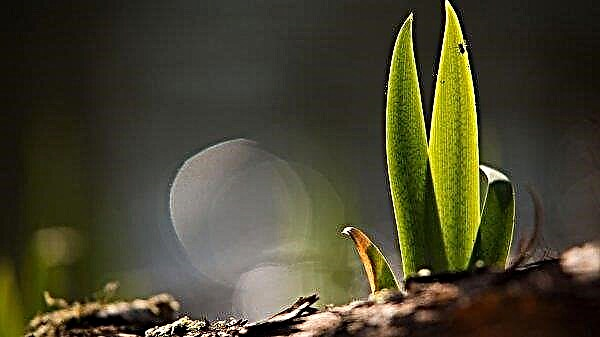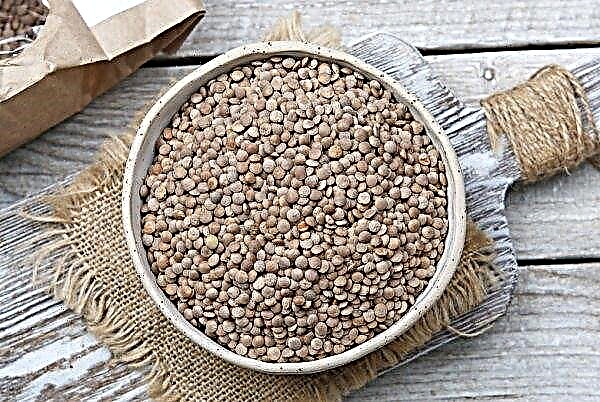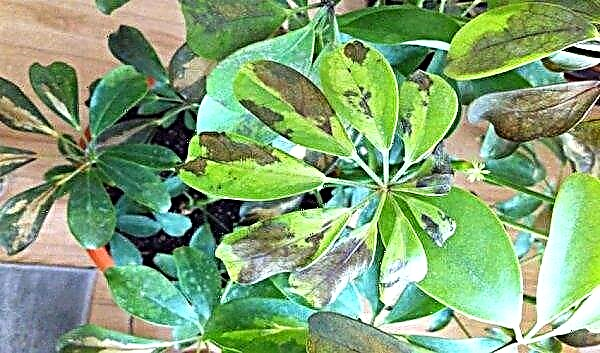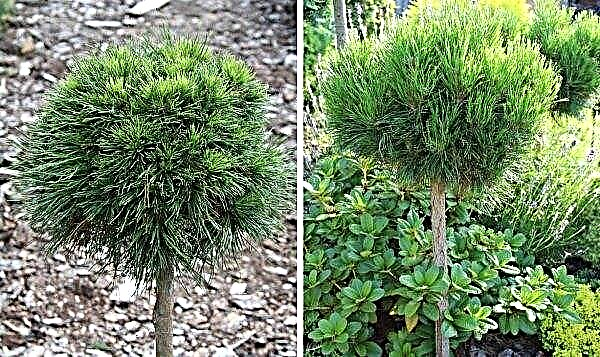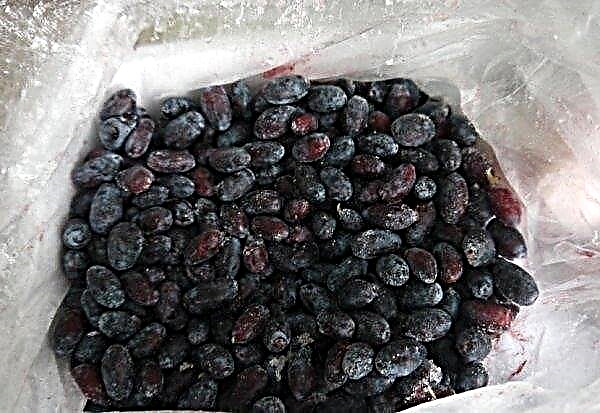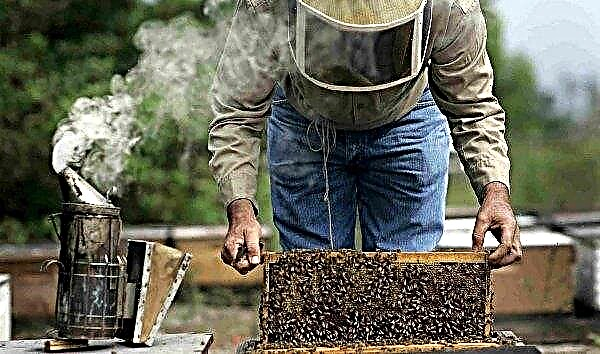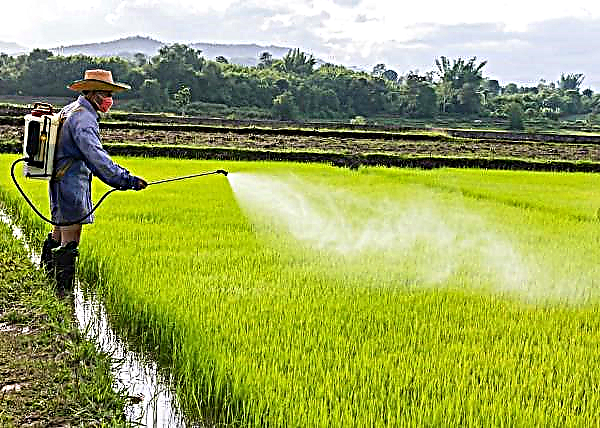Cabbage, perhaps, is one of the most popular and sought-after vegetable crops on our tables. But most often, speaking of this vegetable, we have in mind white cabbage, without which it is impossible to imagine borsch or cabbage soup. However, there is not such a popular variety of culture, about which we know much less, although this is in no way connected with the useful and nutritional properties of this subspecies. It will be about cauliflower, as well as whether it can be eaten raw.
Description and characteristics of cauliflower
Cauliflower is an annual vegetable crop of the species Cabbage. Vegetable is planted both in autumn and spring. The roots of the plant are quite close to the soil surface, which makes the culture very dependent on the degree of moisture of the substrate.
The stem has the shape of a cylinder; dimensions range from 0.15-0.7 m in length. Leaves grow in a horizontal plane or with a slight upward direction, can be twisted like a spiral. Foliage can reach a length of 0.35 m or more. The color of the leaves can be any shade of green, sometimes various options for blue-violet color are possible.
Inflorescences are most often located quite densely and densely, their sizes vary from 3 to 16 cm or more. Small white flowers (a yellowish tint is possible), can reach a diameter of 2.4 cm.
Did you know? In the XIV century, Europe was just beginning its acquaintance with cauliflower. At that time, the main supplier of seed material for this crop was the island of Cyprus. Seeds were so expensive that only representatives of the richest families and royal families of Europe could enjoy their harvest.
Vitamin composition and calorie content of the product
This vegetable is the undisputed leader among all subspecies and types of cabbage in the content of nutrients, vitamins, and dietary qualities. For example, white cabbage contains a maximum of 70% (or even 50%) of protein, and 30-50% of vitamin C from the usual content of the same substances in cauliflower.
The following are some of the beneficial substances that are contained in this culture (mg / 100 g):
- Vitamin A - 0.15;
- C - 50–90;
- B1 is 0.1;
- B2 - 0.07-0.09;
- B6 0.15-0.17;
- PP is 0.6.
- Na - 10;
- K - 208–212;
- Ca - 58–62;
- Mg - 16–18;
- P - 50-52;
- Fe - 1.3–1.5.
- sugar - 1.8-4.1;
- starch - 0, 45–0.52;
- fiber - 0, 58–1.08;
- protein - 1.58–2.48.
The energy value of the culture is about 24.8 kcal / 100 g.

Is it possible to eat raw cauliflower
Despite the fact that we are accustomed to eating cauliflower after heat treatment (scalded, fried in batter, etc.), it is quite suitable for raw consumption. In this state, a larger amount of vitamins and nutrients is preserved in the vegetable culture. For example, vitamins such as A, groups B, PP after heat treatment become much less due to their decomposition.
Important! Due to the low content of fiber, as well as its delicate structure, the vegetable is an excellent product for raw consumption, since the irritating effect on the gastric mucosa is very weak.
You can eat raw cabbage, like eating an apple, for example, but it is better to use a vegetable in salads. There are many recipes that include fresh cauliflower.
Listed below are some foods that go well with this vegetable:
- banana;
- lemon;
- raisins;
- onions, especially red lettuce, as well as green;
- garlic;
- wild garlic;
- cucumbers
- greenery;
- green pea;
- corn;
- boiled chicken;
- ham;
- yogurt;
- low-fat sour cream;
- soy sauce;
- vegetable oil.
 Among the cooking options, including heat treatment of the product, It should be said about the most sparing, in which the maximum amount of useful substances is preserved:
Among the cooking options, including heat treatment of the product, It should be said about the most sparing, in which the maximum amount of useful substances is preserved:- steamed, but if this is not possible, then with a minimum amount of water (the liquid should barely cover the inflorescences);
- vegetable can be stewed;
- bake in the oven or on the grill;
- fry the shortest possible time in as little oil as possible.
Important! Do not forget that heat treatment has one important feature: protein, both vegetable and animal, subjected to heat treatment, is absorbed much better than raw.
Useful properties of cauliflower
The product has a lot of useful qualities, among which some are of particular value to children and women, while others are of particular interest to men. A varied and balanced content of nutrients allows you to classify the product as dietary, suitable even for feeding babies who are just starting to eat something other than breast or artificial milk. The product extremely rarely causes allergies, has a beneficial effect on digestion, and normalizes intestinal motility.
For men, an extremely important quality of vegetable culture is its ability to reduce the risk of prostate cancer, as well as the ability to maintain the body of a man in good shape, maintain vigor and the necessary energy balance.
An important factor in the usefulness of a vegetable is its ability to remove toxins and free radicals from the body, and stimulate self-cleaning processes. Due to the balanced composition of natural vitamins, the product has a beneficial effect on the state of the immune system, supporting it during periods of vitamin deficiency.
Regular consumption of a product can enable the mechanism of hidden reserves of the body. This circumstance is especially useful during illness during the cold season (flu, SARS, colds, etc.). What is also important, eating cabbage improves the state of the nervous system, successfully combats chronic fatigue syndrome.
For the heart and blood vessels
The vegetable does not just cleanse the vessels of harmful cholesterol, it prevents their formation, therefore, its use in food for problems of the cardiovascular system, including atherosclerosis, is fully justified and very effective.
Regular intake of vegetables favorably affects the state of the walls of blood vessels, maintaining or even returning them flexibility and elasticity. The product helps to normalize the process of blood coagulation, has a positive effect on the mechanism of hematopoiesis and blood circulation, reduces the risk of heart attack and stroke.Potassium is able to remove excess moisture from the body, which is extremely important for the removal of edema, often with problems associated with cardiology.
For digestion
Irreplaceable vegetable and with gastrointestinal problems. Due to the particularly delicate structure of fiber, culture does not have a harsh, irritating effect on the digestive system. Due to such a soft and gentle effect on the digestive system, this vegetable culture is advisable to use for gastritis and ulcers. The vegetable has proved itself well and as a means to normalize the digestive process, cleanse the digestive tract.
Due to such a soft and gentle effect on the digestive system, this vegetable culture is advisable to use for gastritis and ulcers. The vegetable has proved itself well and as a means to normalize the digestive process, cleanse the digestive tract.
The product prevents the spread of pathogenic microorganisms, thereby contributing to the reproduction of beneficial microflora. The composition contains methylmethionine (vitamin U), which has anti-inflammatory and antimicrobial effects, accelerates the healing of ulcers and scars of the stomach and intestines.
Due to the high content of fiber, which has a delicate structure, doctors advise using such cabbage in food for pancreatitis (boiled or baked) and cholecystitis (only not in the acute phase). Thus, it is safe to say that this type of cabbage is quite suitable for nutrition in case of problems with the digestive system.
Did you know? It is believed that the ancestor of modern cauliflower was originally bred in Syria, for this reason the vegetable was formerly called Syrian cabbage.
For the prevention of neoplasms
The results of recent research in oncology have shown that frequent consumption of cauliflower reduces the likelihood of a malignant tumor developing in certain parts of the intestine and urinary system.
For women's health
The unique qualities of the product are very useful for women, especially after 35 years. Culture has the following curious property: it is able to balance the production of certain hormones, and this is very important at a specified age (however, as at any age in general). This fact can minimize the likelihood of breast cancer.
The use of vegetable culture has a positive effect on the mechanism of cell renewal (epidermal cells in particular). In addition, the vegetable is used in various masks to strengthen and give shine to hair and skin elasticity.
For weight loss
Certain properties of cabbage make it an excellent dietary product.
- Moreover, its use in diet for weight loss is caused not by just one, but by several factors, among which are the following:
- low calorie content;
- tartronic acid inhibits the processes of lipogenesis (the conversion of carbohydrates into adipose tissues);
- in order to digest this vegetable, the body requires one and a half times more energy than a similar procedure for most other crops;
- methylmethionine helps to cope with bouts of depression, which are frequent companions of fasting.
The above qualities of the culture allow it to be included in all kinds of diets and menus for those who want to lose weight. To feel the corresponding effect, you need to consume at least 120 g of product daily.
During pregnancy and breastfeeding
This product is also useful during pregnancy and lactation. At this time, a woman and a child really need B vitamins, especially B9. This substance is directly involved in the formation of the fetal nervous system, due to its deficiency, there is a likelihood of developing CNS pathologies.
The vegetable will help to cope with constipation, frequent during pregnancy, and with a quick set of extra pounds. A good culture is also a source of iron, an element indispensable for the normal development of the fetus, because its lack can cause the development of anemia.
During breastfeeding, cabbage can also become an indispensable source of nutrients, in addition, it is very useful for the liver. However, it is necessary to carefully monitor the condition of the child: in the event that the baby has signs of allergy or a disorder appears, the use of the product should be discontinued.
Product Harm and Contraindications
- There are a number of contraindications that you should pay attention to before using cauliflower:
- gastrointestinal upset;
- dysentery;
- intestinal colic and spasmolytic pain;
- enterocolitis in the acute stage;
- gout;
- kidney stones and urinary canals;
- Bazedova's disease;
- recovery period after surgery in the chest and abdomen;
- with caution, you should use a vegetable for problems with the kidneys, and with a high pressure it will be useful to consult a specialist.
Although the product is recommended for food for gastritis and ulcers, nevertheless, this should be done carefully, as in the case of high acidity. The fact is that frequent use of the product in large portions, in addition to the obvious benefits, can cause some harm to the body, as it can increase the acidity of gastric juice.
How to choose a quality product
It should be borne in mind that most of the above useful qualities of cauliflower remain in it for 9-12 days. This fact does not mean at all that after the indicated period the vegetable becomes absolutely useless, but its maximum benefit will bring it in this particular time period.
In order to choose the freshest head and, therefore, the most useful, pay attention to such features:
- the head should be dense and fairly weighty;
- around the inflorescences there should be a tight-fitting green foliage, if it is not there, this is a sign that the green that has begun to turn yellow has been peeled, therefore, the vegetable has been lying on the counter for a long time;
- the shade of inflorescences can vary from white to yellowish, green, violet, shades of red-blue are less common;
- carefully examine the inflorescences - the presence of dark spots and dots indicates that the vegetable has begun to deteriorate;
- another sign that the vegetable has long been in a warehouse or counter are inflorescences of intense yellow or yellow with a chocolate hue;
- inflorescences should hold tight to the stalks, give the impression of a monolithic head of cabbage.
Important! If the vegetable was purchased in the freshest form, then under the right conditions it can be stored for up to 7 days. In the event that you have acquired clipped inflorescences, they should be eaten in the next two days.
Storage conditions and methods
If you store vegetables in the refrigerator, use a specially designed container located at the bottom of the refrigerator for these purposes. It is advisable to have the head head down, isolated from other vegetables. In this position, the inflorescences will for a long time hold the necessary amount of moisture and, accordingly, remain fresh.
A pretty good option for storing cauliflower is to freeze it. The vegetable almost completely retains its beneficial properties and, in most respects, outperforms imported cabbage.
It is not difficult to freeze the product correctly, for this it is necessary to carry out a number of simple procedures:
- Wash a fresh head of cabbage, gently wipe off and let dry.
- Cut the inflorescences, put them in plastic bags or plastic containers, place them in the refrigerator compartment, designed for quick freezing (usually this is the upper or middle chambers).
- After complete freezing, the product can be transferred to the storage chamber (bottom).
In such a simple way, you can keep the inflorescences of a vegetable fresh for quite a long time. Just remember that after you take the product out of the freezer, you must place it in boiling water without defrosting, then the vegetable will have a very normal consistency similar to fresh cabbage. If you decide to eat a frozen product without heat treatment, you should do this immediately as soon as the inflorescences thaw.
Did you know? Cauliflower contains a unique substance - sulforaphane. It inhibits the development of malignant tumor processes and is a powerful bactericidal agent. However, it is found only in raw cauliflower, and disappears during heat treatment.
Cauliflower is, of course, an excellent dietary product that can satisfy not only the most refined taste, but also bring maximum benefit from its intake. Moreover, the vegetable has such a diverse set of useful qualities that it will be in demand by both men and women, and even children.
In addition, in certain situations, with problems with the digestive organs, blood vessels and heart, eating cauliflower can significantly improve the patient's condition, alleviate the symptoms of the disease.

